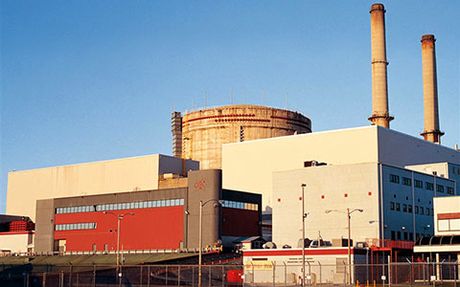If you watched the Jan. 4 episode of “NCIS: Los Angeles,” you got an inside look at a decommissioned nuclear energy facility. Well, sort of. The team investigates the radiation poisoning of a sergeant moonlighting as a security officer at a fictional decommissioned nuclear plant. And, while the popular CBS show accurately portrayed many details about nuclear energy, it took a few liberties to further its storyline. Here’s the truth about some of the nuclear myths spotted in this season’s 21st episode.
Working at a nuclear energy facility is safe and rewarding. Many scenes in this episode portray the fictional Santa Flora Nuclear Plant as a hazardous work environment with less than enthusiastic employees. For example, Callen suggests the security officer lied to his wife about the fact he was working at a decommissioned nuclear plant so she wouldn’t worry. Additionally, Hanna requests fast food rather than eating at the plant’s cafeteria saying “I prefer food that doesn’t glow in the dark.”

Duke Energy employee at Catawba Nuclear Station
While these details may make the plot more interesting, the truth is, nuclear plants are among the safest and most secure industrial facilities in the United States. Cafeteria food at nuclear sites does not glow in the dark and radiation is limited to specific areas of a nuclear site only accessed by highly trained workers.
In addition, nuclear energy facilities support local economies by offering a variety of interesting careers with competitive salaries. In fact, nuclear is the largest job creator of any power source. Duke Energy’s nuclear fleet alone employs nearly 7,000 people in the Carolinas.
Decommissioned nuclear plants are actively monitored. The episode plays off the common misconception that safety and security is relaxed at decommissioned nuclear plants. Disgruntled employee, Dr. Leo Chadmont, explains his concerns about the fictional plant’s problems to Callen and Hanna: “We’re decommissioned, which means the water chemistry is never checked, tubes can rust, safety and contingency plans have been relaxed, cooling and back-up systems are never tested.”

Duke Energy's Crystal River Nuclear Plant
Chadmont’s depiction of the decommissioned plant, however, could not be further from the truth. Take, for example, Duke Energy’s Crystal River Nuclear Plant (CR3), which announced its retirement in 2013. Safety remains the plant’s top priority and CR3’s comprehensive emergency plans and around-the-clock security force remain in place. Radiological and environmental monitoring programs also continue during the entire decommissioning process.
Nuclear power plants responsibly manage used fuel. The climax of the show hinges around an explosion that threatens to drain water out of the plant’s used fuel pool, thus causing the fuel rods to melt. The lack of security and convenient access to the used fuel pools create a dramatic scenario found only on television.
In reality, not only does substantial security limit access to used fuel pools, but the pools themselves are constructed with several feet of steel-lined, reinforced concrete designed to withstand extreme force. The design and other safety measures would mitigate any effects of the unlikely actions seen in the show.
Although the real everyday operation of nuclear facilities is not dramatic, it’s certainly important. After all, without reliable, 24-7 power, how would you catch the next NCIS episode?



Comments (1)